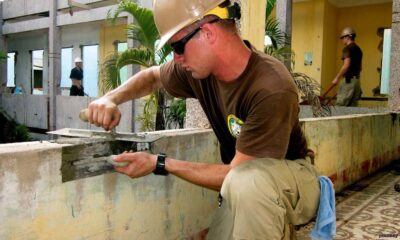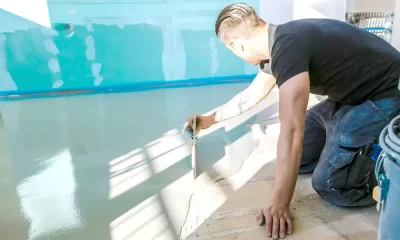Build
Property Owner Sleepout Cabin Basics

Many homeowners may wonder, what is a ‘sleepout’ and is it worth having one in their backyard?
In this guide, we look at the sleepout, and why they’re popular, particularly in the southern hemisphere.
What is a sleepout?
The term ‘sleepout’ is not so popular in the northern hemisphere. In the UK and the USA, a sleepout is better known as a cabin or ‘outbuilding,’ i.e. a small building attached to or near the main house.
However, there is more to the sleepout. For example, they’re not all the same, and for insurance, they may need to be on the floorplans as a sleepout. Plus if you’re building new or renovating an existing building and adding facilities, the sleepout may also need building or resource consent.
Why Not Add A Room To Your Home Instead Of A Sleepout?
Sleepouts are used to provide extra sleeping quarters typically on a short-term basis to accommodate visiting family and friends. However, given half a chance teenagers eye at as theirs or for extra income, the homeowner will rent it out.
You may be wondering why the sleepout instead of adding the extra room onto the home.
The Difference is Cost and Time
Building anything onto your home is more expensive than adding a ready-made or DIY flatpack small cabin or sleepout to your backyard.
While your property will value higher with more bedrooms and footprint, not everyone can afford the renovation. For example, building regulations require you to get a building consent and get it, and you need to hire professionals to complete the building consent application requirements.
It would be best to engage an architect or building designer to create architectural drawings. Depending on your soil, you may need an engineering and land survey report to get the building consent. Already you’ve spent money on these services, and you have not even started the renovation project.
With construction every step incurs costs. Budget your renovation project ‘before’ starting the process and add a contingency fund for unexpected expenses should the build require it. Most new builds and renovations go over budget by up to twenty percent – so be prepared and have the funds, or you’ll risk lengthy delays to getting your extra space inhabitable and signed off by your local authority.
Sleepouts and cabins are so popular that they are mass-produced with consents and they’re are a much cheaper solution to getting more liveable space. If you’re interested click on the image below to view a timelapse video on new sleepout built in just two days.

Do You Need Building Consent For A Sleepout?
There are exemptions where some types of sleepouts or cabins don’t need building consent. However, ‘caveat emptor,’ i.e. buyer beware the rules in one region may not be valid in another so you will need to do your research to confirm your type of sleepout is exempt or require a building permit.
Less than 10m2
Typically a small footprint of less than 10m2 didn’t require a building consent and did you know the average size of a single bedroom is 8m2 so if you need a single room with no water, toilet, or kitchenette you can get this sleepout set up in quick time.
Sleepout Facilities
Sleepouts can have some facilities but not as many as a standard home or minor dwelling. For example, in some areas, a sleepout can not have drinking water, nor a full bathroom, but it can have a toilet, and some are allowed a small kitchenette. There’s no one standard for the small cabin, so you need to check with the local authority in your area regarding the building regulations for the type of outbuilding you want.
If you want more facilities consider a tiny home, or a minor dwelling.
Sleepout vs Tiny House vs Mobile Home
This article explains the tiny house versus a cabin, a shed or a mobile home.
For example, a shed without insulation or other standards for health homes is not a living space.
The cabin or sleepout will meet these requirements, and it’s also either on foundations or a concrete pad.
The tiny house and mobile home should also have insulation even though they are not set on foundations, but on ‘wheels’.
Dwellings on wheels
The dwellings on wheels are vehicles, and they have a much higher depreciation value, in much the same way as any vehicle they can decrease in value by up to 50 percent in the first year. So long term these living spaces have a short useable lifespan than say a cabin.
Rent Out A Sleepout
Home and income add value to residential properties and so why not rent out a sleepout?
TradeMe has these tips on how to rent out the studio or sleepout and remember rental income is taxable.
Ignorance is no defence if your sleepout is illegal and homeowners and property investors will get caught out if their dwelling hasn’t got the right consent for how the building is being used. One punishment may be a refund of rents paid to know the rules beforehand, i.e. seek to understand the legalities of renting rooms or your sleepout to third parties.
Summing up
Every country and its local areas have rules and regulations for livable dwellings.
Assume whatever you have planned for your property will require a building permit and consent.
Always seek to understand what you can and can not do with renovations and outbuildings so you can invest wisely and get the best value for your time and money.
There are pros and cons for all types of dwellings, and your choice will depend on your requirements. Don’t rush your decision, do a thorough SWOT analysis, so you’re adequately informed of the costs, timeframes, opportunities and threats.






